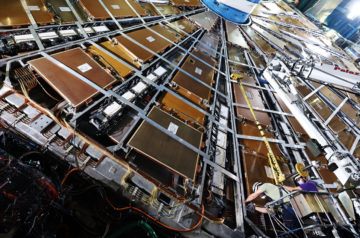Adrian Cho in Science:

A decade ago, particle physicists thrilled the world. On 4 July 2012, 6000 researchers working with the world’s biggest atom smasher, the Large Hadron Collider (LHC) at the European particle physics laboratory, CERN, announced they had discovered the Higgs boson, a massive, fleeting particle key to their abstruse explanation of how other fundamental particles get their mass. The discovery fulfilled a 45-year-old prediction, completed a theory called the standard model, and thrust physicists into the spotlight.
Then came a long hangover. Before the 27-kilometer-long ring-shaped LHC started to take data in 2010, physicists fretted that it might produce the Higgs and nothing else, leaving no clue to what lies beyond the standard model. So far, that nightmare scenario is coming true. “It’s a bit disappointing,” allows Barry Barish, a physicist at the California Institute of Technology. “I thought we would discover supersymmetry,” the leading extension of the standard model.
More here.
